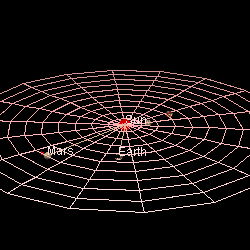NASA's Mars Science Laboratory Curiosity is tucked inside its Atlas V rocket, launched today from Cape Canaveral in Florida. 354 million miles journey will take a 8.5 month to reach Mars. Landing is expected in early August 2012 to start the 23 moth mission.

NASA’s Jet Propulsion Laboratory, Pasadena, Calif., builder of the Mars Science Laboratory, has engineered Curiosity to roll over obstacles up to 65 centimeters (25 inches) high and to travel up to about 200 meters (660 feet) per day on Martian terrain. During the 23 months after landing, Curiosity will analyze samples drilled from rocks or scooped from the ground.
Curiosity will be the fourth NASA rover to touch down on Mars since 1997. The rover will investigate whether the landing region has had environmental conditions favorable for supporting microbial life, and favorable for preserving clues about whether life existed.
"The hope is that we can land there and basically unlock the secrets of an environment that existed there a few billion years ago on Mars that was potentially a place that life could have survived," said Ashwin Vasavada, MSL deputy project scientist.
To learn more see NASA fact sheet for Mars Science Laboratory
Lifetime Achievement Award
More than seven years after completing their three-month prime missions on opposite sides of Mars, NASA rovers Spirit and Opportunity have been selected for lifetime achievement award honors as part of the Breakthrough Awards presented by Popular Mechanics magazine. Originally designed for a 90-day mission, Spirit and Opportunity persevered through the Red Planet’s freezing cold conditions, sand traps and dust storms for years. (Opportunity is still going 2734 Martian days later.)
Rover's Eye View of Three-Year Trek on Mars
During the three-year trek of NASA's Mars Rover Opportunity from Victoria crater to Endeavour crater, rover planners captured a horizon photograph at the end of each drive. 309 images taken during the 13-mile journey appear in this video.